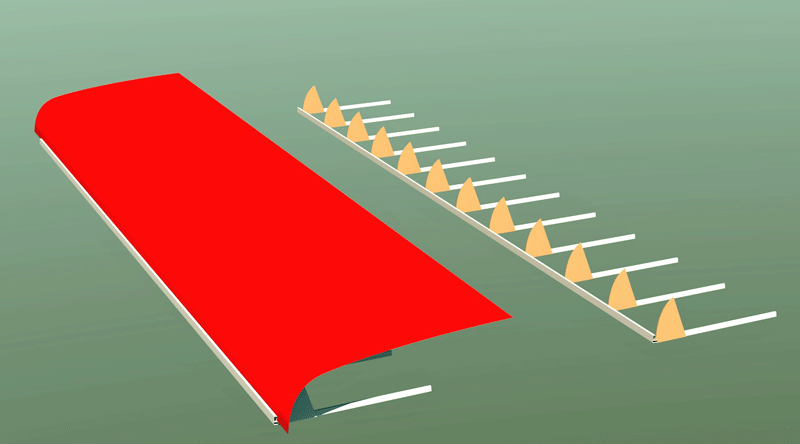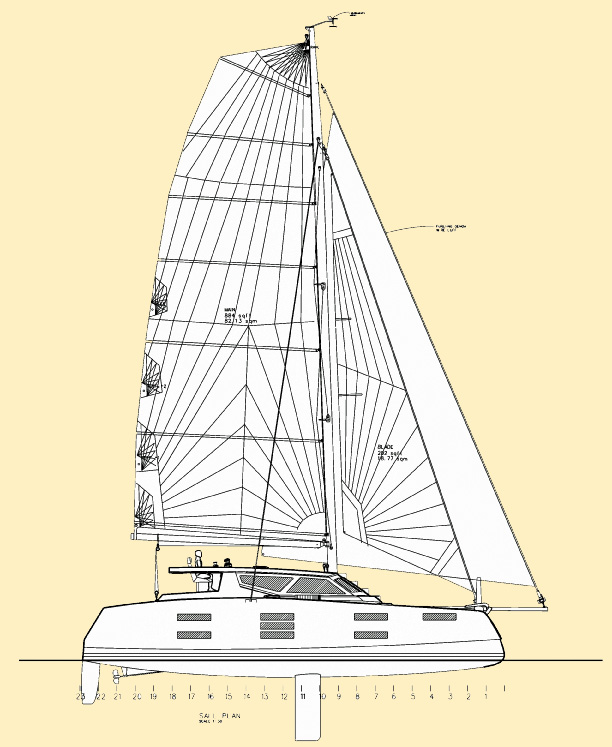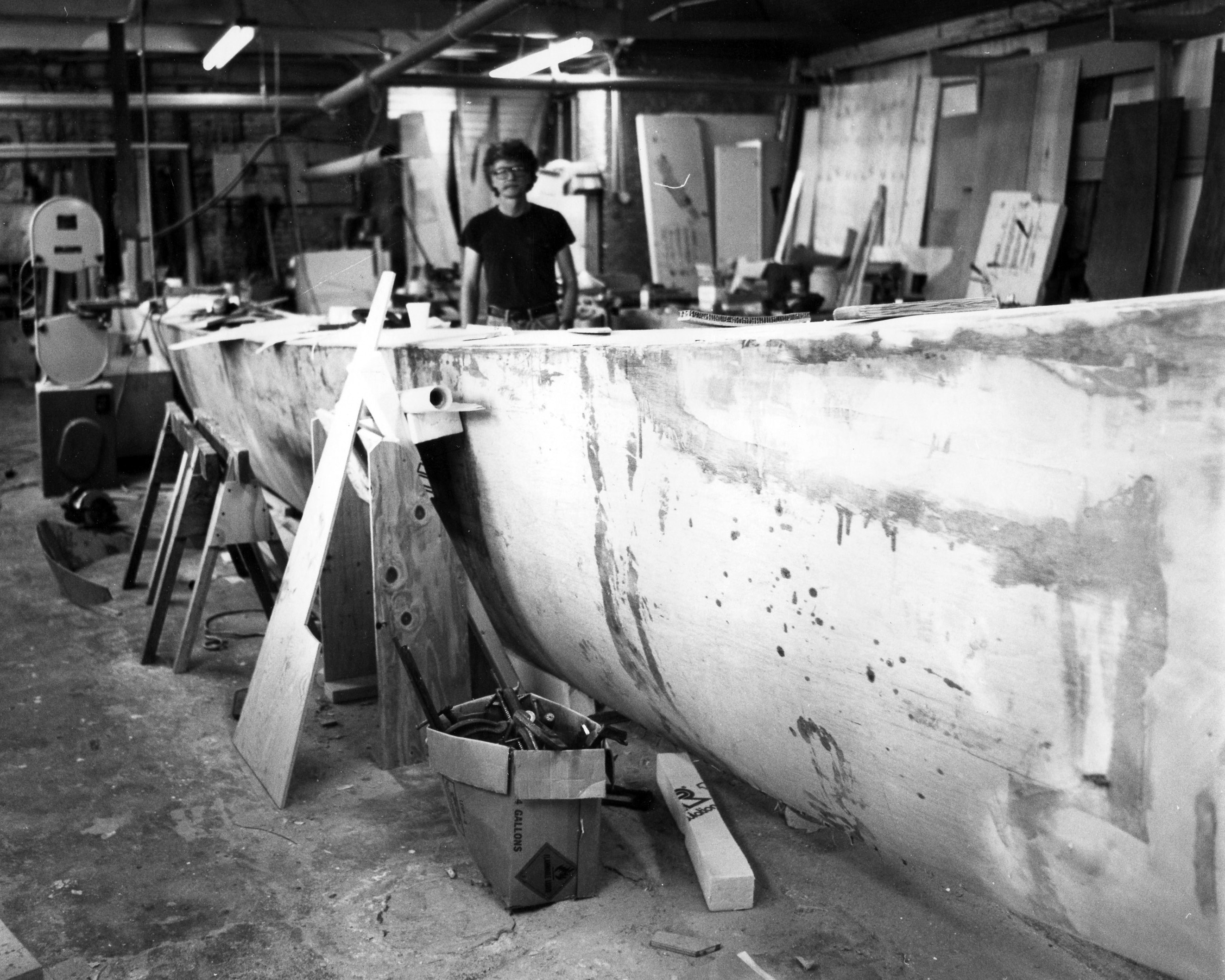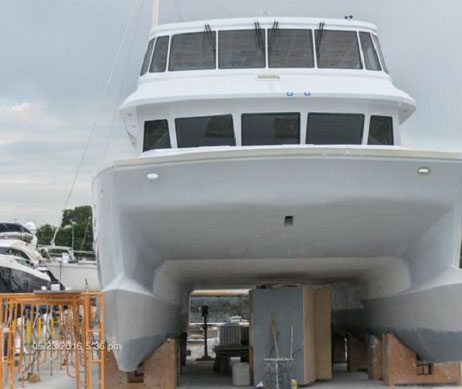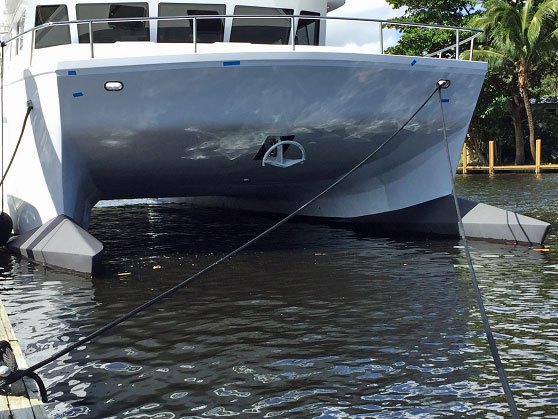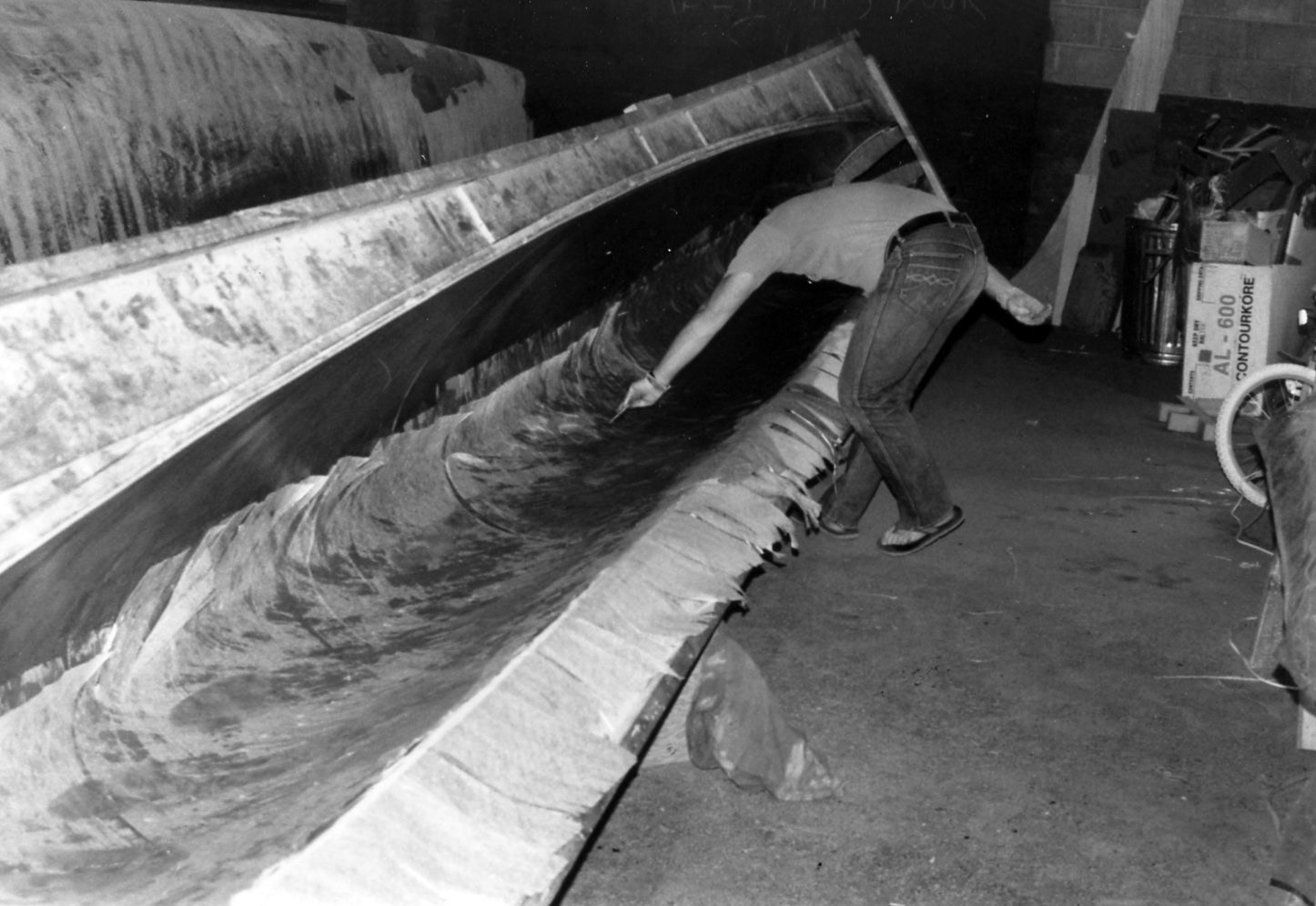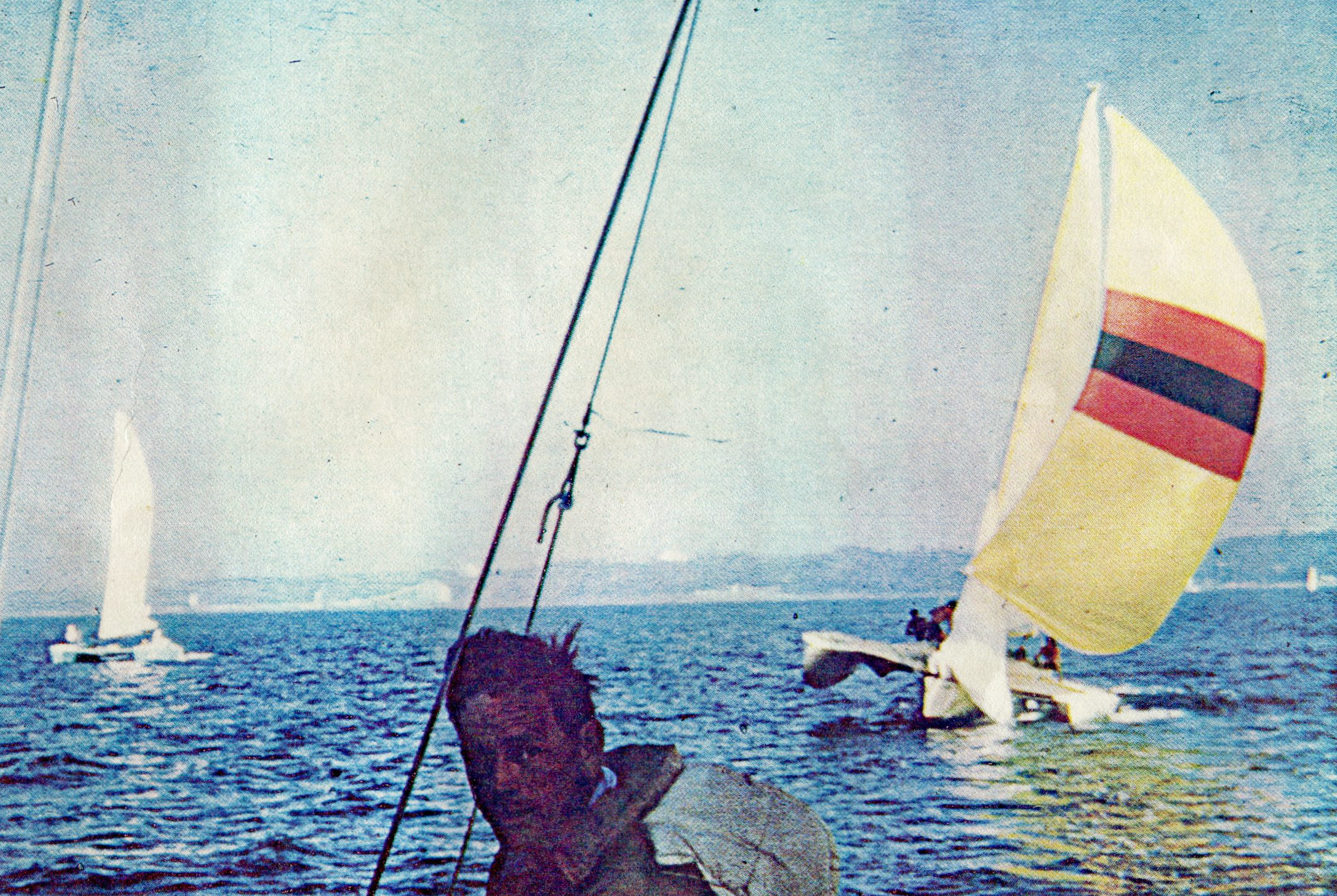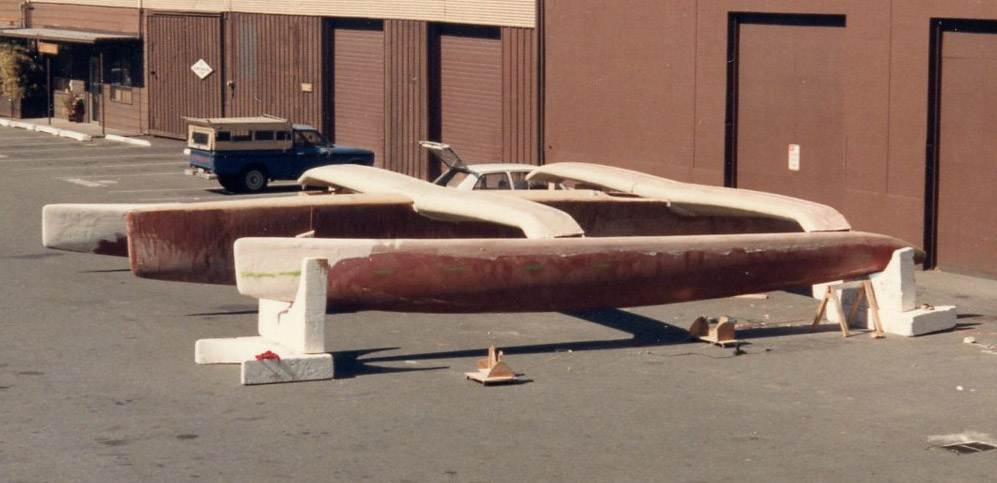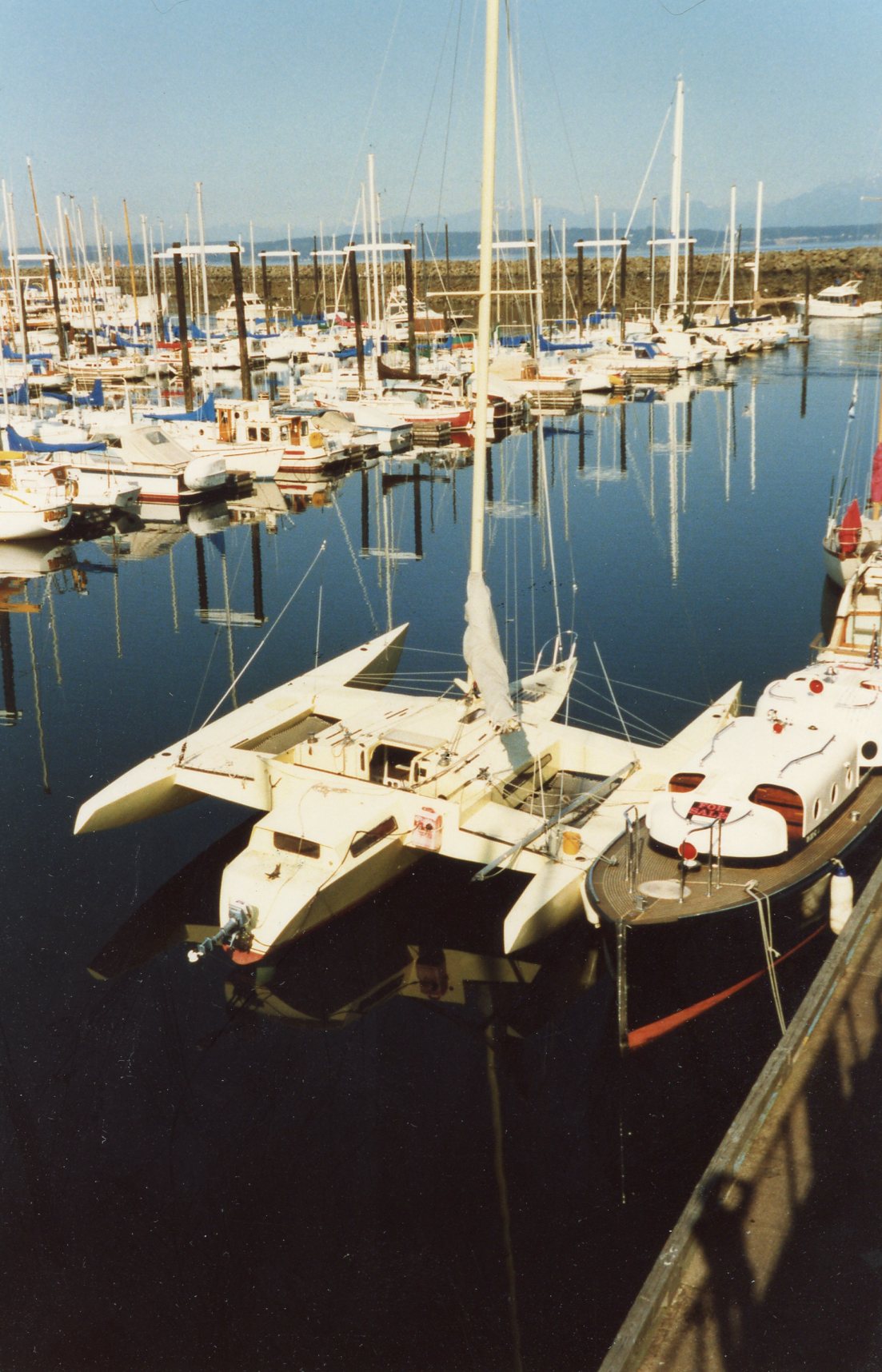Back in the 80’s I noticed that sometimes when bagging a CM panel on the mold, the part only touched at and near the front of the mold. Especially with stiffer plywood. We would put pipe or 2x4s on the top to press it down.
Eventually a lightbulb went off in my head. Why have parts of the cylinder mold there that are not always being used? I did one hull that way but about then Charles at Multihulls published my first design and I have been scrambling to keep up ever since. It never got puttered-with nor published.
Its not that big a thing, it just saves plywood. The hold-down gutter is the same. A lumber runner along the bottom of each tiny station keeps the mold from tipping over. And by ajusting the angle of the stations, more possible hull sections are possible.
With this mold system, the exact same type of plywood must be used on all of the panels in a particular hull.
First, a comparison with both types of CM.
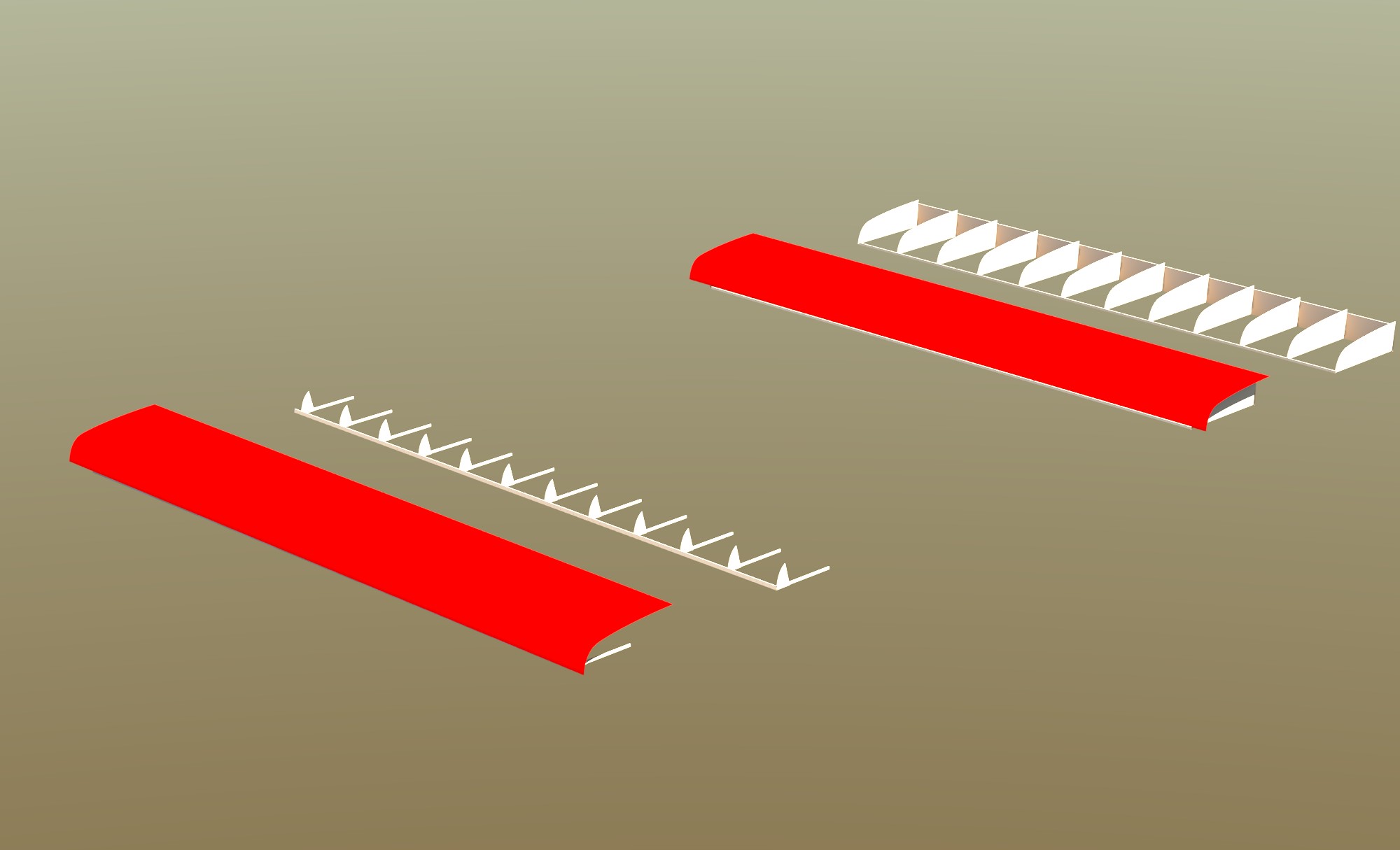
Next, zooming into the Airmold. Showing with both a panel on and off of it.
